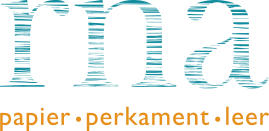The anatomical model of the gorilla was made in the 19th century by the physician and anatomist Louis Auzoux. The gorilla was purchased in 2014 by the Boerhaave Museum. The model of the gorilla originally consisted of 104 items, of which there are about 90 now. The gorilla stands on a wooden base on which to screw a tree and a stone from papier-mâché are mounted. The tree provides the gorilla its support. There is a large metal pin from the right thigh on the right foot in the tree. The gorilla itself is built up are provided from a metal frame around which paper layers. Surrounding it is a coat of paint, which is composed of gelatin with pigments. The individual parts each also consist of a metal frame surrounded by papier-mâché. These parts were made with the aid of jigs. Furthermore, in addition to the frame, there are also other metal elements, such as the brass eyelets and hooks with which the parts are attached to each other.
Remarkably, this is the only model in which real bones are processed. These are clearly seen on the right side of the body, the right arm and the right leg as well as the skull. A number of bones is almost completely covered with paper such as the vertebrae and pelvis. Also in the left arm bones that are not or hardly visible under the papier-mâché.
At the start of the restoration, the gorilla was in very poor condition. He sat under a thick layer of dust and dirt. Especially horizontal surfaces, such as the skull, right thigh and left foot were very dirty. Through the agency of large fluctuations in humidity and temperature was almost the entire coating compromised to a greater or lesser extent. In particular, the outer parts were strong shaved. On these parts is so that the missing half of the paint film. The more the parts are inside, the better to protect them and the better their condition. All the metal parts were corroded. The wooden frame was structurally no longer in order.
The first step of the restoration was the dismantling of the whole gorilla and documenting all the separate parts into a purpose-built database. Until that moment how many parts we had no idea of the gorilla now really existed and what was the exact condition of the inner parts, especially the intestines. All parts are fitted around label with a number and a rectangular labels made with a hand. The numbering indicates the correct order of assembly and disassembly to. The hand indicates the direction in which the component must be disconnected. We have all the spare parts before and after the treatment accurately photographed. The intestines were found complete but unfortunately still to be in slightly worse condition than expected. The gorilla had suffered water damage somewhere in his life. The water was gone from his right collarbone in the chest, along the right lung, partly the heart, liver and kidneys. This made the surface of these parts go moldy with small black dots as a result. Also here, the paint layer was attacked, partly dissolved and partly scaly, such as on the outside.
When we removed the object, section 104 was the last over. A very bald gorilla. In this way we also found out that there are a total of 14 items were missing and that there were three components without numbering.
When the documentation was completed we could start by removing the worst dirt and dust. For this I used a vacuum cleaner with a small set-piece and a brush. A portion of the dirt was drawn into the top layer of the coating. This dirt can not be removed with the vacuum cleaner, which should be done with a wet method. We use iced water and brushes and sponges.
The next phase was to consolidate the paint flakes. For this we have the surface piece by piece smeared with a mixture of two adhesives. The moisture from the glue soaked the chips and thus the paint is slowly coming back flat on the surface.
The worst scaling sat on the shoulder of the right arm. The chips were very large and the edges were even completely curled. This unfortunately did not get quite right. After consolidation remains a system of fractures visible in the places where the edges of the chips were up.
The eyes of gorilla are retouched after consolidation. That means we have the color again applied with a watercolor paint.
